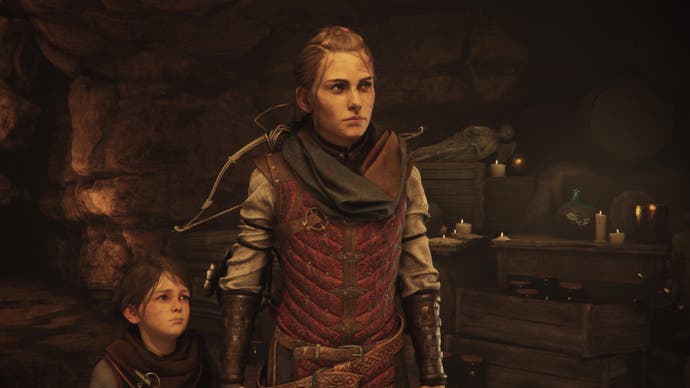A Plague Tale: Requiem is as stunning as it is stressful
Did Amicia?
I'd forgotten how stressful A Plague Tale can be. These kids really don't get a break do they? It's probably not right to even call them kids any more either - I'm not sure how old Amicia is now, in Requiem, the sequel, but she's a young woman in attitude alone. She's been through some stuff, they both have - Amicia and her younger brother Hugo - and they've been shaped by it. And whereas they largely ran from trouble in Innocence, and all of their abilities were based around escaping, more or less, now they've got some fight in them. They're killers, and that changes things a bit, but I'll come to that.
The stress: it's a good and bad thing. Part of it is absolutely intended, I believe. Developer Asobo wants us to feel the relentlessness of the challenge Amicia and Hugo face in staying alive. They're still mercilessly hunted by a shady organisation with a never ending supply of soldiers, and they're still very much at danger from the plague ravaging the land: The Black Death and the hordes of rats that carry it.
Their existence is one escape from death after another. My goodness, by the end of the few chapters of Requiem I play, Amicia is a walking wreck, carrying a concussion that's made her collapse more than once. But she slogs on because she has to - I really like Amicia (both the character and the way she's acted and brought to life); I'm less keen on Hugo. The point is, they don't get a moment to relax so nor should you. And that's fine, but when the game is frustrating to play, problems arise.
A Plague Tale: Requiem is, like A Plague Tale: Innocence before it, a stealth game. It's a good fit for translating the odds Amicia (who's the main character) is up against. She faces grown men in armour, soldiers, so toe-to-toe encounters are a bad idea. The game reminds you of this often. There's usually one chance to get away after being caught while sneaking around, courtesy of a 'counter' move, and if you don't, you're dead. I get it: there's trial and error like this in probably every stealth game as you watch and learn enemies, and experiment with routes.
But I died something like 20 times during the few chapters of the preview build, and because of it, frustration crept in. One particularly annoying moment was a kind of mini boss battle that I couldn't avoid, which penned me into a small area with a heavily armoured and aggressive opponent I had to de-armour and then kill. Fine. The problem wasn't even him once I'd worked out what to do, but the two other enemies it inexplicably threw in towards the end of the fight. I don't know why it needed to do that. I swore. A lot.
I'm not trying to say A Plague Tale: Requiem is a hard game. I don't think the encounters are hard in that sense. The enemies aren't particularly clever or aggressive or anything like that. The issue is how fragile you are, and how the game wants to punish you harshly to underline this.
Exacerbating this further is a feeling that the stealth sections are missing something - missing abilities, missing flair, missing fun. And it feels sluggish, as though a focus on spectacle and cinematic animation has taken away from a feeling of tight control. And that's where the bad kind of stress comes in.
But, there's hope, and it comes in the form of new toys to play with.
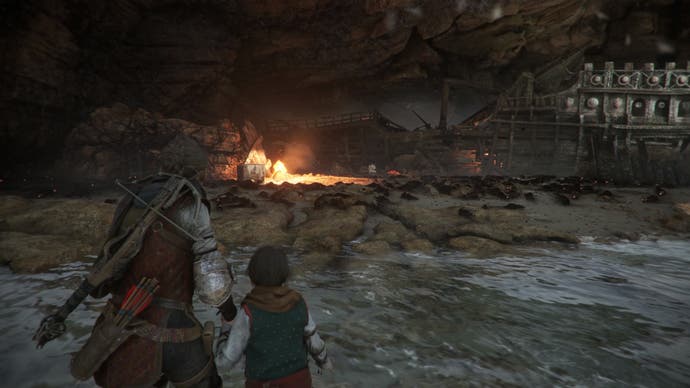
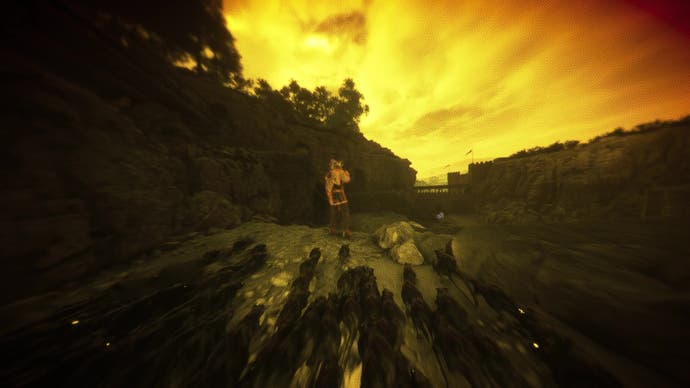
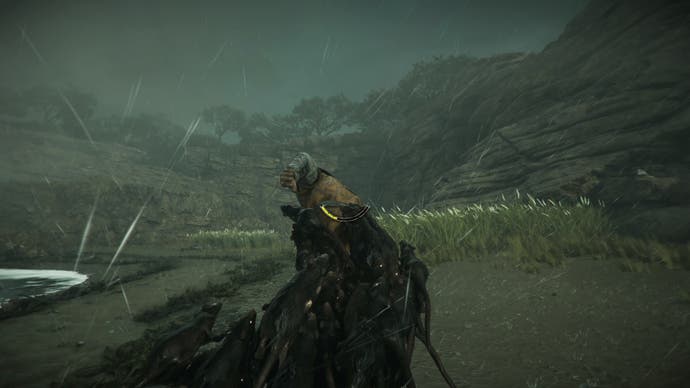
Let's look at Amicia first. The obvious change is she now has a crossbow whereas before she only had a sling, so she can kill people reliably from range. But there's a limiting factor in how often this can be used, as bolts are found few and far between. You can use it to tactically take out one or two of several soldiers in a scenario, but that's it. It's a similar deal with knives: Amicia can now stab and kill enemies, but knives are left behind when you use them, and they're hard to find.
Hugo has a more reliable way of killing people, on the other hand, and it is rats. Rats are back in Requiem with a vengeance. They were one of the most memorable features of A Plague Tale: Innocence, the way they'd spew out of the ground like a geyser, then wash over - and devour - anything in their path. Half of the game was concerned with your puzzling ways around the rats by using light from fire and the sun, which repels them.
But now, Hugo can control rats, as you'll know if you played to the end of the first game. He's even got a literal Ratsense ability that Amicia can use as a kind of sensor to temporarily see nearby enemies and their patrol paths. And it's through that Ratsense he can find swarms of rats and possess them.
Once in their eyes, Hugo can direct the squealing, writhing mass across a level and over obstacles to engulf enemies unprotected by torches or light. And it feels wonderful to do - it reminds me of the deliciously horrid powers in The Darkness, if you remember that game. Again, there's a limiting factor in the form of a gauge that fills with use, and when filled, Hugo's abilities will be out of action for a while.
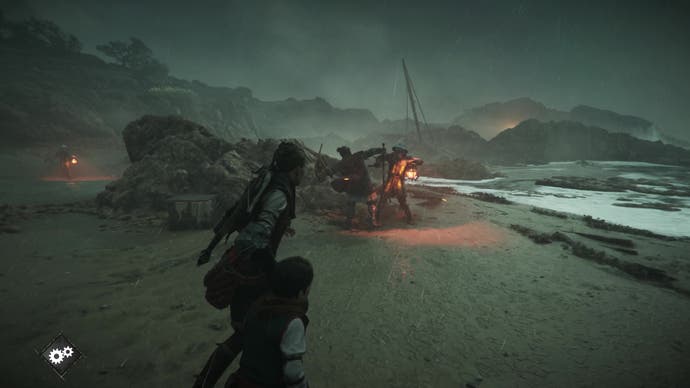
Amicia calling on a helping hand in combat is a central feature in Requiem. You will meet a soldier called Arno who will join you. Amicia has a sour history with him but I don't know what it is because I played from Chapter 6 and so jumped all the explanation. A little while after he joins, Arno can be directed, with the press of a button, to fight people. And he's good: he'll reliably win one-on-one duels in a few moves. But if you let him get surrounded, you'll need to help or he will die. And if he dies, it's as though you have died: game over for both of you.
In play, these new toys bring much needed new energy to encounters, speeding them up as Arno kills soldiers, and making them fun as Hugo's rats gobble people up. And there are new abilities Amicia can learn, like a push, which pushes opponents into rats and kills them - it's effectively a stealth kill, only disguised a bit - that will liven up the formula further. So towards the end of the game, the stealth game might be a treat.
So I have hope, and I want to have hope because there's so much to love about what Asobo is doing. A Plague Tale: Innocence might have been gorgeous - I think it surprised a lot of people - but A Plague Tale: Requiem is stunning. And it's a beauty, for me, that comes through an infatuation with the place it's trying to recreate: 14th Century France. Asobo is a French studio, in case you didn't know, and you can feel the love for the place in every step you take. It's like a historical postcard from France or a history lesson. There's a moment where I find pilgrims camped in a forest and I wander around their camp, tripping over geese and children chasing them, and watch people chat and go about bartering their wares, and I feel like I'm there, in 14th Century France.

And the vistas! Requiem leaves Aquitaine behind for the southerly region of France that borders the Mediterranean: Provence - a move intended to bring more vibrancy and colour, which it does, with abundance. And it's mesmerising. Flowered fields burst with colour; starched, sun-baked clay pits radiate heat; and windswept coastlines brood under thunderous skies. The weather is as much of a character in the game as anyone.
Speaking of character: I like where the game is headed. The chatter between Amicia and Hugo is back as a major storytelling device, and importantly, they use it to talk about things like Amicia having to kill people and Hugo struggling to control the mental link with the rats and their ravenous hunger. It shows me the game isn't arbitrarily throwing in new gameplay features without context and consideration, and that it's at least trying to tackle the dissonance we often feel here - I'm looking at you, Uncharted.
There's a lot to like. So while I have reservations about the guts of it, and the repetition of a so-far-wanting formula and frustrations that arise from it, there are signs it could improve. There's also a sliver of time left before the game comes out in October for fine-tuning. Fingers crossed.
